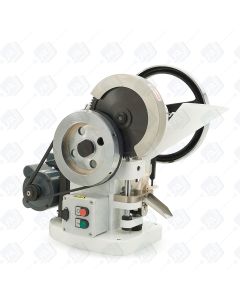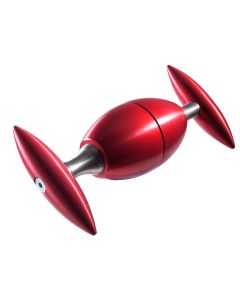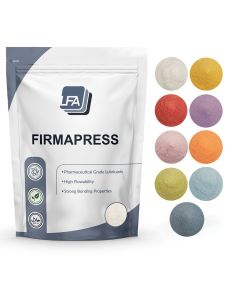Binder Types and Properties Used in Tablet Manufacturing
A binder is a chemical compounds that has an adhesive property, and is one of the more important excipients that are included in tablet formulations. In simple terms, binders or adhesives are the substances that promotes cohesiveness. A binder is therefore used for transforming powder into granules through a process known as granulation. In tablet making, granulation is the process by which small powdery particles are agglomerated into larger entities called granules. In the agglomeration, the active ingredient and excipients are bound together by the binder which gives the granule strength. Binders can also form intergranular bonds that fuse the granules together, forming bridges between adjacent granules. The bridges may result from the melting or softening of the binder during the compression process. Rather than add the binder to the powder before the granulation process, a relatively recent innovation is to mix a dry binder directly with the powder before the tablet compression step. This approach is known as direct compression. The types of binder used for granulation and direct compression are described below.
Binders for Granulation
Flow or fluidity and compressibility are the essential characteristics required for powders/granules that are intended for tablet compression. Fluidity is necessary for the production of tablets of consistent weight and uniform strength. Compressibility is required to form a stable, intact and compact mass when pressure is applied. Traditionally granulation has been the means to achieve both fluidity and compressibility of the tablet material. Granulation has also been used to improve the appearance, mixing properties, to avoid dustiness, to densify material, to reduce segregation, and in general to either eliminate undesirable properties or to improve the physical characteristics of fine powders.
Granulation techniques include wet granulation in which the binder is added in the form of a solution or suspension, and dry granulation/slugging in which the binder is added as a dry powder.
For both solution and dry binders, the compounds are added in low concentrations - typically about 2-10% by weight. Common traditional binders include sucrose, gelatin and starch. More recently introduced binders include polymers such as cellulose derivatives and polyvinylpyrrolidone, which have improved adhesive properties.
Examples of dry binders include cross-linked polyvinylpyrrolidone and microcrystalline cellulose.
Iscriviti alla nostra newsletter
The most common and means of adding binder to powder that is to be granulated, is as a solution. Although the solution method is considered the most effective way of adding binder, an important issue is the compatibility of binder with the API & other tablet components. This is traditionally found by choosing an appropriate stability study design.
Drug characteristics such as compressibility, particle size, surface area, porosity, hydrophobicity and solubility in binder are all important when assessing granulation. A poorly compressible drug formulation will requires a strong binder such as liquid glucose, sucrose, etc., whereas drugs that exhibit good compressibility can be successfully handled using a weak binder (starch paste etc.). Fine and porous powder particles require higher amounts of liquid binder in contrast to coarse particles which require lsee. Hydrophilic drug/excipients also require a higher volume of binder compared to hydrophobic drug/excipients. The granule quality (size, friability) is governed by the solubility of the drug in the granulation solution.
The uniformity of the particle size, hardness, disintegration and compressibility of the granules depends on the type and quantity of binder added to formulation. For example hard granulations that require excessive force during tabletting may be the result of using a stronger binder or a highly concentrated binder solution. On the other hand, fragile granulations may be due to an insufficient quantity of binder in which particles segregate easily. Larger quantities of granulating liquid tend to produce a narrower particle size range of coarse and hard granules, i.e. the proportion of fine granulates is less. Therefore the optimum quantity of liquid needed to obtain a given particle size should be determined before setting up the granulation process so as to keep batch to batch variations to a minimum.
Binder Concentration Recommendation:
Preservative Concentration for Liquid Oral Preparation
| Sr. No. | Binder | Recommended % |
|---|---|---|
| 1 | Acacia gum with water for hydro alcohol | 2 to 5% |
| 2 | Gum tragacanth with water | 1 to 3% |
| 3 | Gelatin with water | 1 to 4% |
| 4 | Sucrose with water | 2 to 20% |
| 5 | Starch paste in water | 1 to 4% |
| 6 | Sodium alginate with water | 3 to 5% |
| 7 | Methyl cellulose with water | 2 to 6% |
| 8 | Sodium carboxymethyl cellulose with water | 6% |
| 9 | Ethyl cellulose with alcohol | 0.5 to 2% |
| 10 | Hydroxy propyl methyl cellulose with water, hydro alcohol, methylene chloride etc. | 2 to 5% |
| 11 | Polyvinyl pyrrolidone with water, alcohol and hydro alcohol | 0.5 to 5% |
| 12 | Magnesium aluminium silicates with water | 2 to 10% |
Binders for Direct Compression
Direct compression offers a simpler route to tablet manufacture, product stability and high efficiency, and the method has therefore increased in popularity in recent years. Direct compression is suited to moisture- or heat-sensitive ingredients that are contraindicated in wet granulation. It is also well suited to powders which can be mixed well and do not require further granulation steps prior to introduction to the tablet press. For Direct Compression, directly compressible binders are required which should exhibit adequate powder compressibility and flowability. Direct compression binders should therefore be selected on the basis of compression behaviour, volume reduction under applied pressure and flow behaviour in order to have optimum binding performance. The choice and selection of binders is extremely critical for Direct Compression tablets. It is possible to use pre formulated pill powder mix like Firmapress.
Commonly Used Direct Compression Binders
LFA stocks a large range of binders as well as other excipients. If you are having trouble formulating your mix why not get in contact and see if we are able to help. We have a lot of experience in developing custom formulas.





